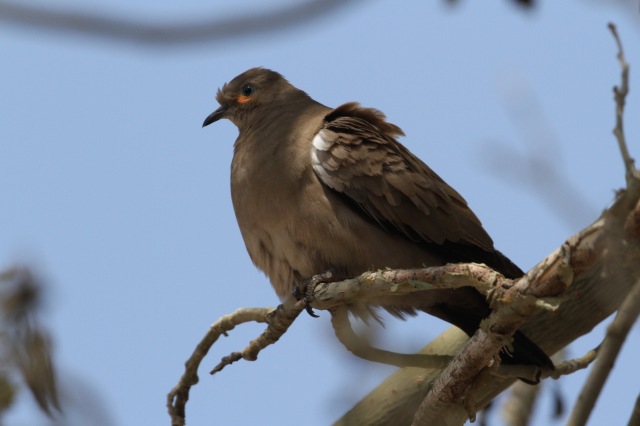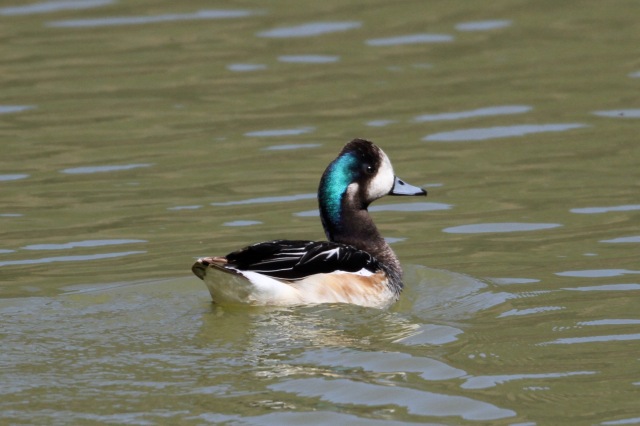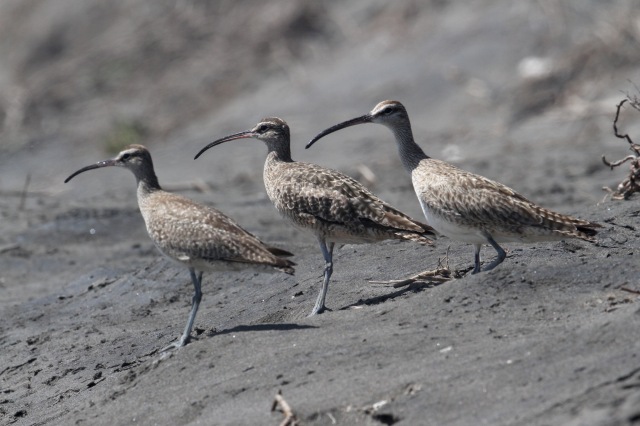The iconic Andean Condor, the largest flying bird in the world, by combined measurement of weight and wingspan. We saw ten together around El Colorado
Having arrived back in Santiago from our Atacama experience, we spent the next six days exploring the central belt, from the Andes to the Pacific ocean. This region is rich in bird-life and home to many of Chile’s endemics. The first couple of nights were spent in one of Refugios Rukara Rayen’s comfortable cabanas at Olmue, on the doorstep of the national park of La Campana. Unfortunately, close proximity didn’t translate into admittance, at least on our first attempt, due to a public workers strike. This frustrating set-back forced us to go exploring and led to the discovery of the excellent Embalse Llilliu, where we came across plenty of interesting stuff. The following day we did manage a crafty squiz around the park, courtesy of the kind ranger who had promised us the day before that the park would be ‘open tomorrow’. We only had time to reach the ‘band-stand’ and back but it was long enough to nail our principle target, White-throated Tapaculo. The rest of that day was spent birding the coast, from Algarrabo to the mouth of the mighty Maipo river. A night in a rather average cabana in the hills above San Antonio, was followed by a visit to the excellent private nature reserve of Tricao, before heading north to Quintero and the quaint cabanas at Rocas del Pirata, with breath-taking views out over the Pacific. A day birding the sites north of Quintero, including the infamous Sulphurico Acido plant laguna – a few kilometres north of the town, La Laguna estuary and Penguin Rock at Cachagua, was an excellent warm-up for the much anticipated pelagic out of Quintero, the following morning. In the event, not quite as good as last time, but an outstanding birding experience nonetheless, with three species of albatross, two large petrels, Northern Giant petrel, plenty of close Wilson’s petrel, Magellanic Penguin, a couple of shearwater species and a plentiful supporting cast to keep us amused. Our final morning in the central region was again spent in the Andes above Santiago, revisiting the ski resort of Farallones and the Valle Nervado, before a leisurely farewell family BBQ at Las Condes.
Black-winged Ground-Dove, the ‘default’ dove sp. of the Andes
Grey-headed Sierra Finch, regular on the scrubby slopes of the lower Andes
Another common bird of the Andean slopes, White-browed Ground-Tyrant
Not so common or easy to catch up with, the imposing Magellanic Horned Owl
Forced, by the closure of La Campana NP through strike action, to look elsewhere, the reservoir above Llilliu produced some excellent alternative birding
From the common but stunning Chiloe Wigeon
to the rather understated Pied-billed Grebe
and this Red-gartered Coot, the common coot species of Central and Southern regions
The prize for our persistence at La Campana was White-throated Tapaculo, a Chilean endemic and a Chile ‘tick’ for me
Other birds in the park included Dark-bellied Cinclodes, the commonest of the family in Central and Southern regions
and Chilean Mockingbird, another Chilean endemic
There are several excellent wetlands and river estuaries in the Central belt – good for ducks, coot and waders. Here is Neil on the swing-bridge at the Tricao private nature reserve (photo courtesy of Jane Williams)
This handsome pair of Cinnamon Teal were also at Tricao
Collared Plover, an uncommon river island breeder. These were at La Laguna
and White-backed Stilt, at Lago Peñuelas NP
There were some superb birds along the coast, between Algarrobo and the Maipo delta – this is Snowy Plover
and the Americas version of Little Egret – Snowy Egret, with Brown-headed Gull and American Oystercatcher in the background
Hudsonian Whimbrel – common on the coast in Chile. Previously seen in Cornwall this autumn! Follow this link for details
A nice group of Surf Bird, which winter along the coast of South America but breed in the Alaskan tundra
Black Skimmer and Franklin’s Gull, on the estuary at Concon
A lovely larid – Grey Gull
Blackish Oystercatcher
To conclude this section, another Chilean endemic – this is Seaside Cinclodes
My next ‘Chile 2016’ blog will feature some of the birds seen on the pelagic out of Quintero.























